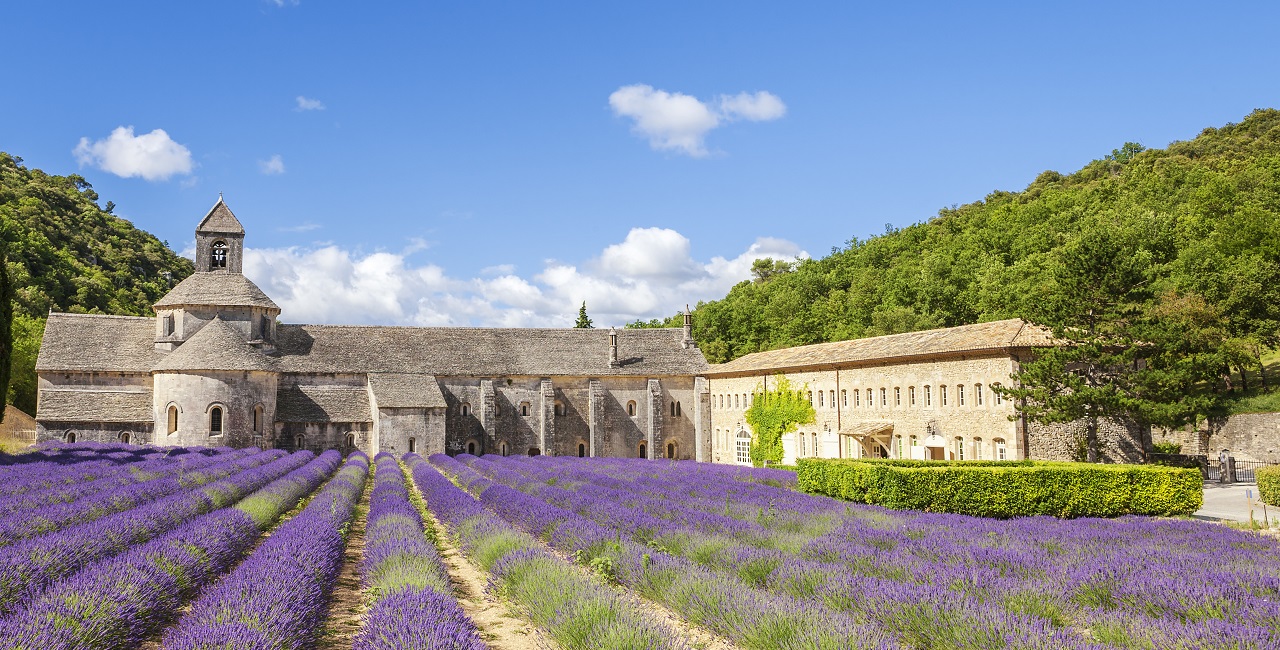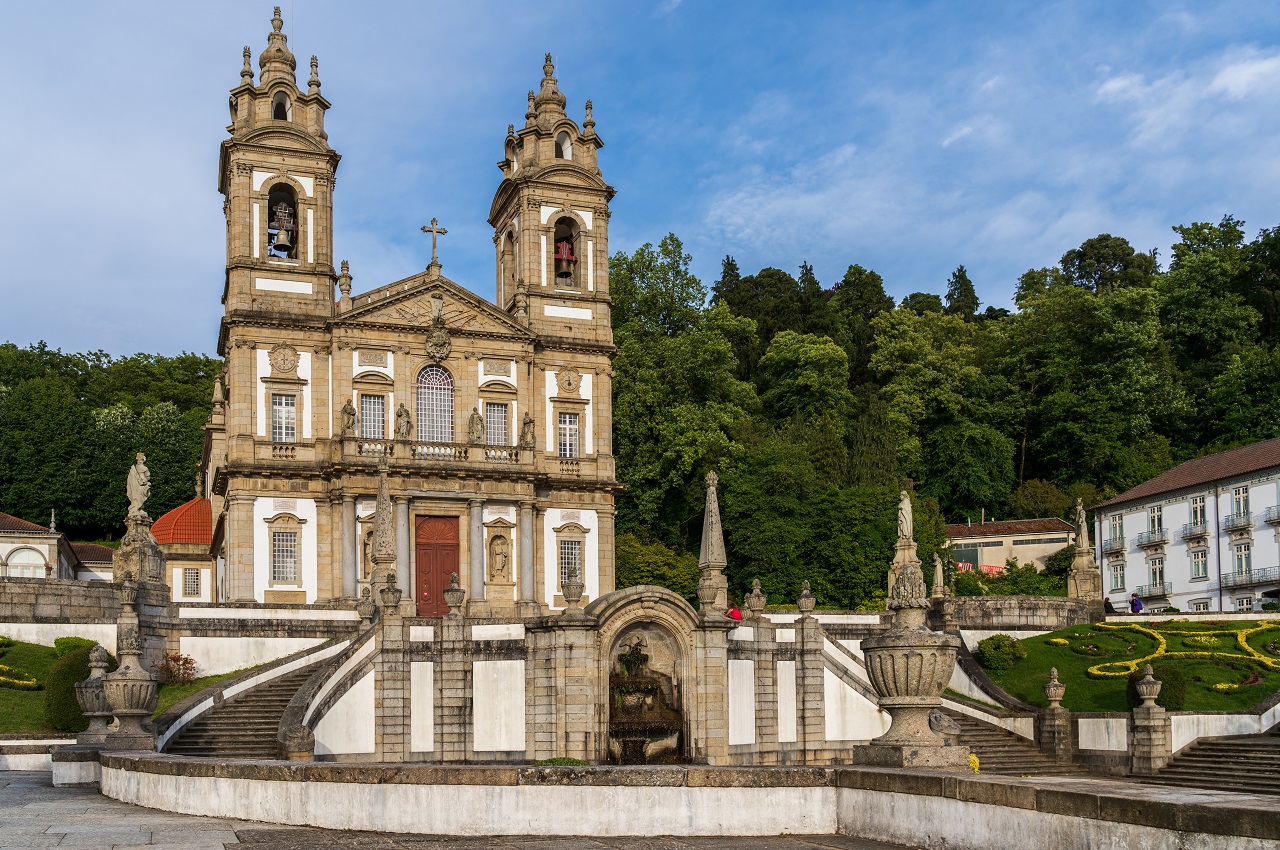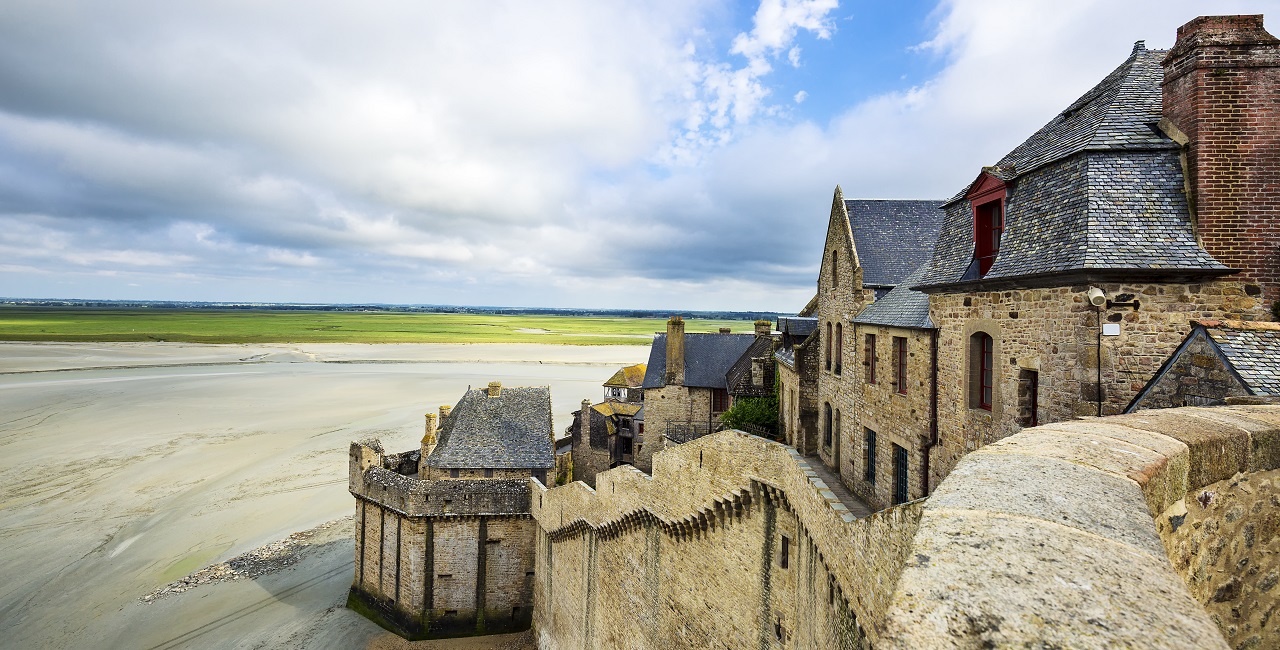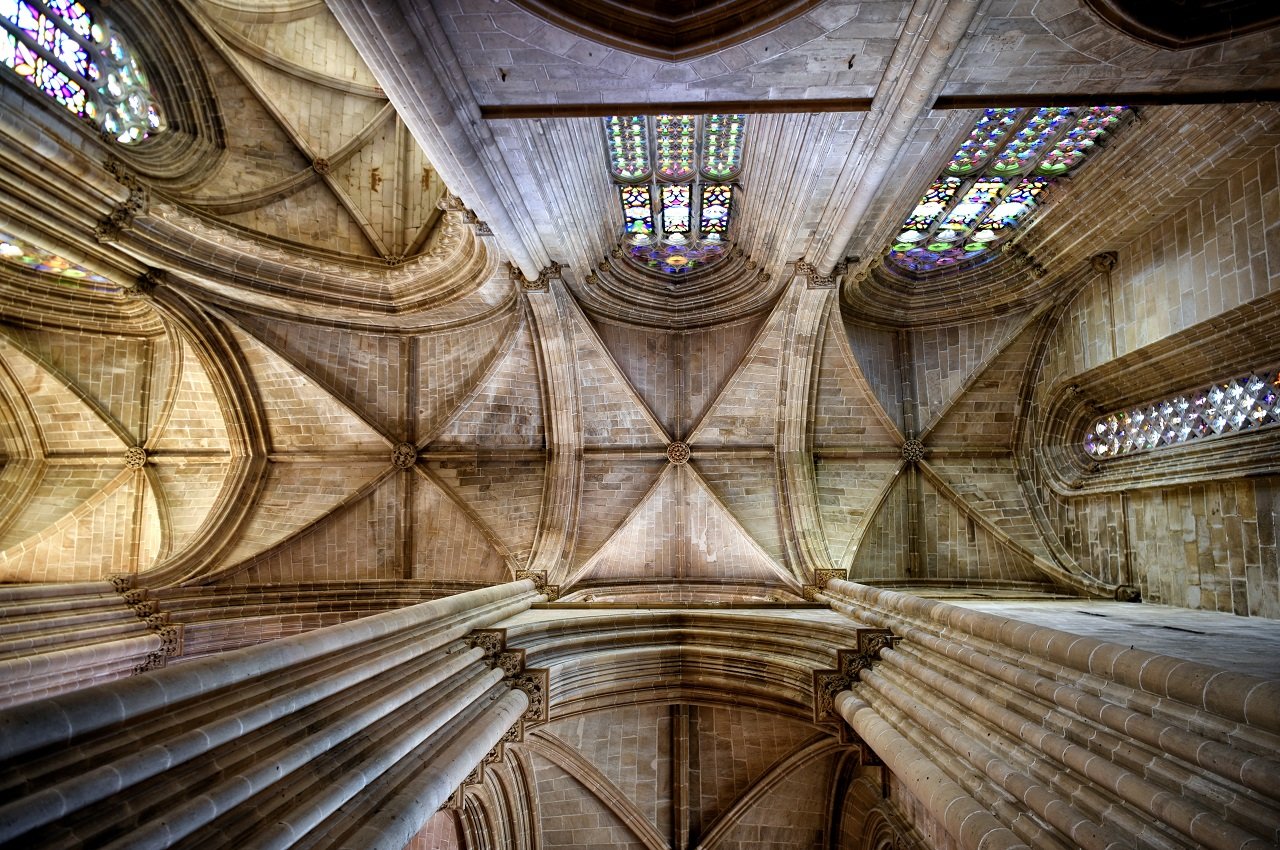Modern architects often take inspiration from existing architectural styles when designing structures.
And Provençal architecture is a favorite of some of the most famous architects in the world. It is characterized by symmetrical elements, arched doorways, and multi-story structures with hipped roofs. This type of architecture can be found on both residential and non–residential structures today.
In this guide, I’ll be discussing the evolution of this style and some of its best examples in detail.
Provençal Architecture – A Brief Overview

Located on the French Riviera, Provence is most famous for its picturesque landscapes and fields of lavender that provide a breathtaking view in summer. Apart from these, it is known for its impressive architecture, which incorporates architectural styles from different periods and cultures. These include buildings from the Roman era as well as those belonging to the middle ages.
After the 18th Century, Provence was among the most impoverished regions of France, and this situation lasted till the 20th Century. However, the economy of the region witnessed a revival after this period, leading to the development of some impressive structures. The most famous is the Unité d’habitation, constructed in Marseille by the famous architect Le Corbusier.
Since France was home to numerous cultures over the centuries, its architecture underwent a series of changes. And several examples from different time periods remain, making it easy to understand how the architecture of the region has evolved.
I’ll be discussing the architecture of each period in the following sections.
Ancient And Prehistoric Architectural Sites
The most famous prehistoric site of Provence is located in an underwater cave near Marseille on the coast. This cave, known as the Cosquer Cave, contains evidence of a settlement whose exact period of existence is unknown. But according to experts, it existed between 27,000 and 19,000 BC.
Another site that existed at around 6,000 BC was discovered close to where the Saint Charles Railway station now stands in Marseille. This settlement contained a few tools and had clay walls with holes that could be used to attach posts.
The city of Marseille was established by Greek colonists in 546 BCE, who had escaped from the city of Phocaea when it was being invaded by Persians. It was originally called Massalia, and evidence of its existence was found on the western side of the city.
This settlement was spread across 50 hectares toward the eastern side, and Marseille was limited to this size till the 17th Century. While the remains of the original Phocacean fortifications date back to the end of the 7th Century, these fortifications were rebuilt using pink limestone in the 2nd Century.
Some historical sources, such as the writings of the historian Strabo, state that the city had temples dedicated to Artemis and Apollo. However, no evidence of this has been found, and the only structures discovered were the cellars of Saint-Sauveur, likely used as an arsenal or granary.
After the Phocaeans, the region became home to the Celts, who constructed forts known as oppida, though historians have not discovered any remains of their architecture.
Roman Era Architecture
1. Towns And Roads
The Romans gained control of the region in the 2nd Century BCE after defeating the Celts or Ligurians. They established the Aquae Sextiae in 123 BCE and later began constructing a new town located at Nemausa, now known as Nîmes. Provincia, a Roman colony, was established in 120 BCE.
More importantly, the Romans built a road called the Via Domitia to connect Rome to the Pyrenees, which helped boost trade and commerce in the area. Then began an era of construction of large structures after the Romans conquered Gaul.
These structures included aqueducts, public baths, theaters, amphitheaters, and triumphal arches, which are excellent examples of the architecture of the Roman empire.
2. Arches And Aqueducts
During the reign of the Roman emperor Claudius, the aqueduct of Pont du Gard was built and it is the highest Roman aqueduct in existence. It was situated 50 meters above the Gardon river and carried water over 50 km.
Another amazing example of Roman architecture is the Triumphal Arch at Orange, Vaucluse, built during the reign of emperor Augustus. The main purpose of this arch was to showcase the might of the Roman empire to travelers to the region.
Apart from that, during the period ranging from 10 to 25 AD, close to the town of Glanum, another triumphal arch was built that served a similar purpose. But in 260 AD, the Alamanni, a Germanic tribe, destroyed Glanum.
3. Theaters And Amphitheaters
During the 1st Century AD, emperor Augustus constructed the Roman theater in Orange, Vaucluse, and it is reasonably well-preserved even today. The Christian church closed public access to the theater in 391 AD, and it remained closed till the 19th Century. Now, theater and music festivals are regularly held there.
Arles was the capital of the region during the 1st and 2nd Centuries, and this period saw the construction of the Arles Amphitheatre. It could seat 12,000 spectators and served as an arena for gladiator fights.
4. Temples
The Romans built the Maison Carrée in Nîmes sometime between 16 and 19 BCE, and it remains well preserved. This is because the temple has been used as a Christian church since the 4th Century AD. And the Church of Madeleine in Paris used this temple as its model.

The Romanesque Era
1. Churches
Christianity was adopted by the Roman empire in 380 AD, and it led to the construction of monasteries, cathedrals, and churches across Provence. Often, existing Roman temples were converted into Christian churches, such as the one at Nîmes. At other times, such churches were built on the sites or fora of older temples and used their columns.
Churches also started being built in a new style, which later became known as Romanesque architecture. This style originated in Lombardy, Italy, and it was combined with the Gallo-Roman architecture in Provence. The Byzantine-style churches in Ravenna served as an inspiration for this architectural style.
Decorative elements, such as busts and eagles, which were traditional Roman symbols, were incorporated into this type of architecture. The oldest Christian monument in Provence is the Baptistery of the Fréjus Cathedral, built in this style before the Western Roman Empire fell.
It has an octagonal structure that spreads across 7 meters and a dome resting on arches that lie on columns. The cathedral was discovered in 1925, after which it was restored.
A Roman Catholic church, the Church of St. Trophime, was built between the 12th and 15th Centuries in Arles. It depicted the Last Judgment in sculptural form and was constructed on the site of the Basilica of Arles, built in the 5th Century. Its nave had a Gothic choir later added to it.
2. Abbeys
North of Arles lies the Montmajour Abbey, which was constructed between the 10th and 13th Centuries, and is a Benedictine monastery. It has an unfinished church, a subterranean crypt, and rock-carved graves.
In the 12th Century, the order of Cistercians was formed, and the first Cistercian monastery in Provence, the Sénanque Abbey, was built in 1148. Another abbey, the Thoronet Abbey, was built in 1160 in Draguignan, and it was an inspiration for later structures, like the Priory of Sainte Marie de La Tourette.
The third Cistercian abbey, the Silvacane Abbey, was constructed in 1175 at La Roque-d’Anthéron.
3. Cathedrals
Romanesque architecture was succeeded by Gothic architecture in the mid-12th Century, and the Aix Cathedral in Aix-en-Provence depicts this transition. It was constructed where the Roman forum of Aix was located in the 1st Century and has neo-Gothic, Gothic, and Romanesque elements.
The Gothic Era
1. Churches
While Gothic architecture became common in the 12th Century, it became popular in Province only in the late 13th Century. The Basilica Sainte Marie-Madeleine in Saint-Maximin-la-Sainte-Baume was the first Gothic church built in Provence and was supposed to contain the sarcophagus of Mary Magdalene.
While construction started in 1295, work had to be stopped because of the Black Death in 1348. It was restarted in 1404 and continued till 1532, when the authorities decided to let it remain as it was, without a bell tower and portal.
Currently, the church has three apses and 16 chapels but does not have a transept. Other Romanesque churches in Provence were transformed into Gothic ones. For instance, the transept of the Aix Cathedral in Aix-en-Provence had two Gothic-style wings added. Similarly, the Romanesque apse of the Church of St.Trophime was replaced by a Gothic choir.
2. The Papal Residence
The Palais des Papes in Avignon was the best example of Gothic architecture in Provence. It served as the residence of the Popes when Pope Clement V shifted the Papal Curia to Avignon during the Avignon Papacy. Pope Benedict XII began the construction, and his successors continued it.
It contained a 10-acre fortified palace where the antipopes, Clement VII and Benedict XIII, resided. The palace has wooden ceilings, sculptures, and tapestries decorating the interiors.
3. Bridges
One of the wonders of the medieval world, the Pont Saint-Bénézet, was also constructed in Provence. It was a 900-meter-long Gothic-style bridge with 22 arches that replaced a stone Romanesque bridge, which had been destroyed by a flood in 1226.
This Romanesque bridge itself had been a replacement for an older Roman bridge constructed of wood across the Rhône river. The Avignon bridge was the sole bridge across the Rhône in the medieval era from the river mouth to Lyon. But it started collapsing in the 17th Century until most of it was carried away by a flood in 1669.
A chapel dedicated to Saint Nicholas was also constructed here.

From The 2nd To The 17th Century
With the decline of Roman power in Provence, the region saw multiple invasions over the following centuries. The Visigoths attacked in the 5th Century, followed by the Franks in the 6th Century, and the Arabs in the 8th Century. Beber pirates were also frequent invaders.
Eventually, the Counts of Barcelona and the Counts of Toulouse became rulers of the region. The architecture of this period was designed to withstand repeated invasions. Walls and towers became common in monasteries, and the Bishop’s residence in Fréjus became well fortified.
Hilltop Settlements And Forts
Hilltop castles with walled towns were the most common feature of the Provençal architecture of this period. The remains of a church and a château were found in the Luberon area, the village of Roussillon, Vaucluse. Les-Baux-de-Provence was a hilltop settlement that was originally established around 6,000 BCE.
During the 2nd Century AD, a Celtic fort was built there and about 79 villages and towns were in the area in the middle ages. Finally, the region became part of France in the 15th Century. In 1632, the town and castle walls were destroyed on the orders of Cardinal Richelieu.
A hilltop fort was built by the Celtic tribe of the Vordenses at Gordes in the Vaucluse, which later became a Roman fort. In the 9th Century, a castle was built there by Guillaume d’Agoult, and the town was surrounded by walls during the Hundred Years War in the 14th Century. Gordes finally became a part of France in 1481.
From The 14th To The 16th Centuries
The Château d’If was built between 1527 and 1529 on an island in the Bay of Marseille to fend off naval attacks and it later became a prison. Another chateau, the Château of Tarascon, was started in 1400 by Louis II of Anjou and completed by René, his son.
New fortifications were also built between 1590 and 1597 to protect the region from armies equipped with modern weapons like cannons. A fortress, the Citadel of Sisteron, was constructed on the route to the Mediterranean Sea through the Alps. Its walls had salients and recesses and were designed in a sawtooth pattern.
17th Century Architecture
During the 17th Century, when Louis XIV was the king of France, a new town hall, or Hôtel de Ville, was built in Arles. It was designed by Jacques Peytret with the help of Jules Hardouin-Mansart and had a vaulted ceiling along with a large court in the center.
The hall did not have a central column and was supported by joined stones on Doric columns. It served as a symbol of the growing power of the bourgeoisie.
19th Century Architecture
The 19th Century saw two different styles of architecture in Provence. The first was the style of the French Second Empire, and the Toulon Opera is the best example of this style. It was started in 1860 by Léon Feuchère and completed in 1862, becoming the second-largest opera house in the country.
Another style was the Neo-Byzantine style, and the Basilica of the Notre-Dame de la Garde was constructed in this style between 1853 to 1864. It was built by Henri-Jacques Espérandieu and had a 60-meter-tall belfry and a statue of the Virgin and Child.
20th And 21st Centuries
Corbusier was the most famous French architect of the 20th Century, and the Unité d’habitation in Marseille is one of his most famous buildings. It was constructed using unfinished concrete, with 19 stories and 330 apartments in 20 designs. Sports facilities, clinics, and even shops were included within the structure.
A vacation home, Cabanon de Vacances, was also built by Corbusier in 1952 using plywood and wooden logs. Then there is the Villa Ephrussi de Rothschild, built by Aaron Messiah between 1911 and 1912. This contains a famous structure known as the Temple of Love, several ponds, waterfalls, and multiple types of gardens.
Another impressive example of 20th Century Provençal architecture is the Fondation Maeght, a modern art museum located on a hill overlooking St. Paul de Vence. It was designed by Josep Lluís Sert i López and contains ceramics, collages, sculptures, etc.
Theodore Reinach, a French archaeologist, built the Villa Kerylos at Beaulieu-Sur-Mer on the French Riviera in the 1900s in the ancient Greek revival architectural style. It takes inspiration from Egypt, Pompeii, and Rome and features bas-reliefs made by Paul Jean-Baptiste Gascq.
Coming to modern architecture, the Gare d’Avignon TGV train station was constructed in South-Eastern France in the 21st Century. It was designed by Jean-Marie Duthilleul and Jean-François Blassel and features Gothic arches.
Best Examples Of Provencal Architecture
The origin of all architecture in Provencal can be traced back to the common village house or stone cottage. These humble structures once influenced a wide range of buildings, from bastides to elegant stone villas. Characterized by spacious rooms, terracotta or stone tiles, patinated ceiling beams, and wooden floors, these architectural styles have left a lasting impact.
Below, I’ve highlighted some of the finest examples of Provençal architecture found worldwide, exquisite luxury villas that beautifully incorporate these distinct features.
1. House Ventabren
Located near the Old Town of Aix-en-Provence in Bouches du Rhône, France, this structure was built in the 18th Century and includes several outbuildings, a pool, and a guest house. Many of the buildings here were renovated in the 21st Century, and you can find vaulted ceilings and wooden floors.
In addition, there are six bedrooms, a country kitchen, a conservatory, and multiple reception rooms. I personally like the stone dining terrace with its reflecting pools and fountains.
2. Villa Mareza
Villa Mareza is one of the most famous luxury villas in Attica, Greece, spread across 14,000 acres. Made of stone, it has impressive reception and dining areas along with traditional fireplaces. French doors and huge sash windows are also added, and you can find a sauna, gym, and 8 bedrooms inside.
In addition, the villa has a separate cottage for the gardener, with a kitchen, a living room, and two bedrooms. The grounds feature neoclassical gardens, a riding arena, stables, a tennis court, and a swimming pool.
3. Ker Arvor
Ker Arvor is located in Rhode Island and was constructed in 1933 by the Russell & Clinton architectural firm. It takes its inspiration from the Pavillon de la Lanterne in France and is spread across 9 acres. Featuring a U-shaped design, the house has a facade made of white stucco and a French mansard roof.
Cobblestone is also used near the base, and the building had to be restored in the 21st Century. Also, it uses finishes imported from France to maintain authenticity, and there are formal gardens and a pool terrace that add to its charm.
4. French Country Estate
This manor house is located in Charlotte, North Carolina, and is spread across 5 acres of wooded land. It features shuttered windows in the traditional French style, a stone facade, and a hand-laid cobblestone driveway. Inside, you can find hand-carved masonry, hand-painted frescos, wooden and stone floors, and beamed ceilings.
There is also a gourmet kitchen, a dining room, a great room, and a sun terrace. Other highlights include a free-form pool, a carriage house, a billiards room, and a wine cellar.
5. Villa Burlingame
An excellent example of modern Provencal architecture is Villa Burlingame, the residence of actor and musician Jim Belushi. Located in Los Angeles, California, it was designed by Michael Smith and built by Oscar Shamamian in 2010.
The most striking feature of this house is that it uses materials from different regions of the world, such as Italian floor tiles, Venezuelan roof tiles, and Moroccan bathroom tiles. There are 11 bathrooms, six bedrooms, a pool house, and guest house.

Final Thoughts
For architecture enthusiasts, visiting Provence on the French Riviera can be one of the best experiences. The region is an excellent choice if you want to witness the evolution of architecture in the area from the prehistoric to the modern period.
What I find so fascinating about this place is that many of the structures are in reasonably good condition, especially those from the Roman and Gothic periods. Work has also been done to renovate and maintain other structures that have been affected by time.
Plus, due to its magnificence and timeless nature, the architecture of Provence has been an inspiration for many buildings across the globe.


